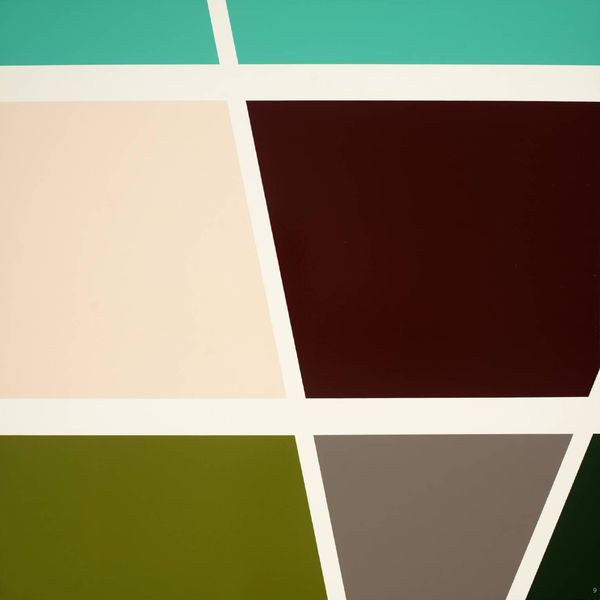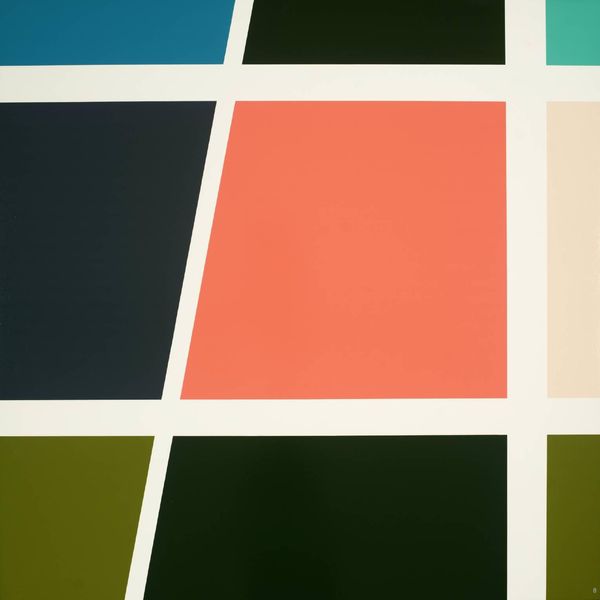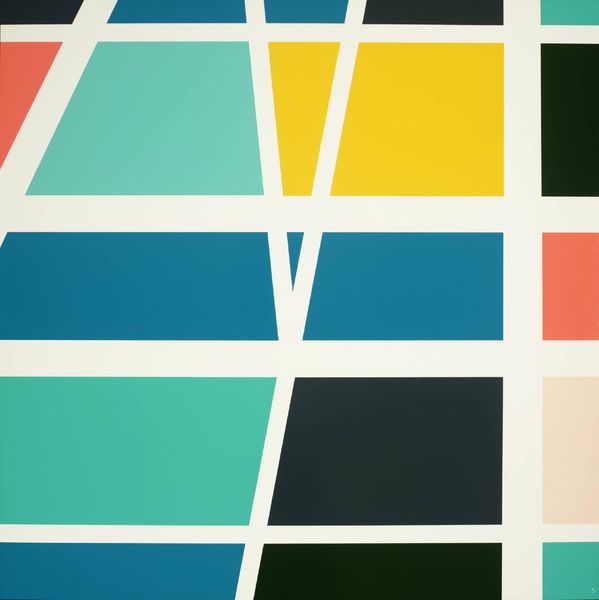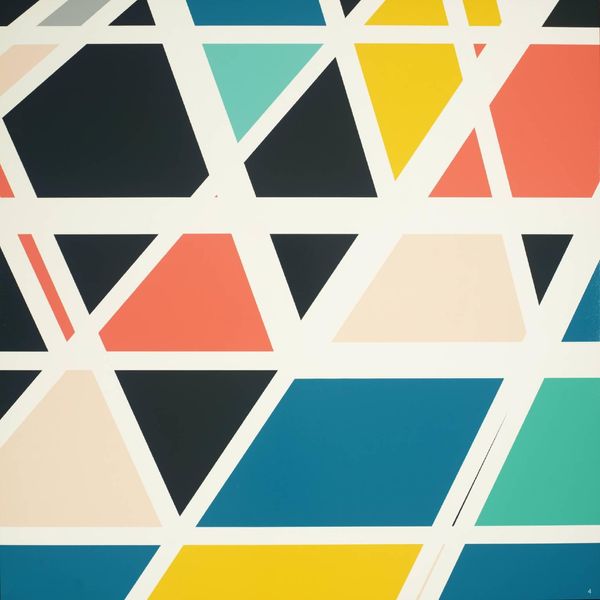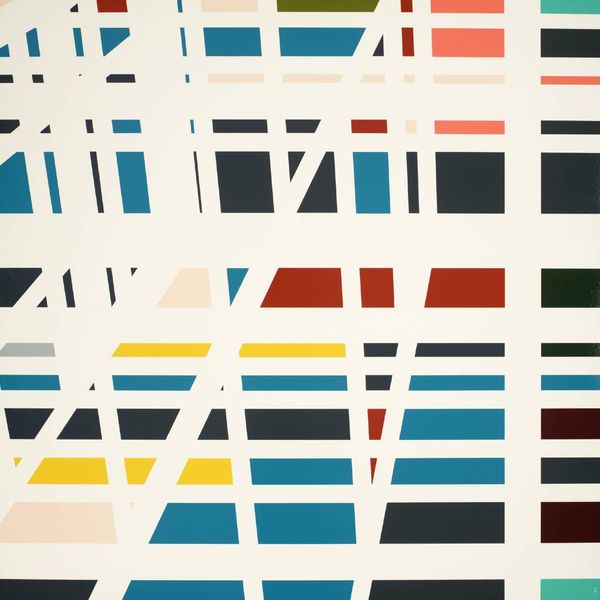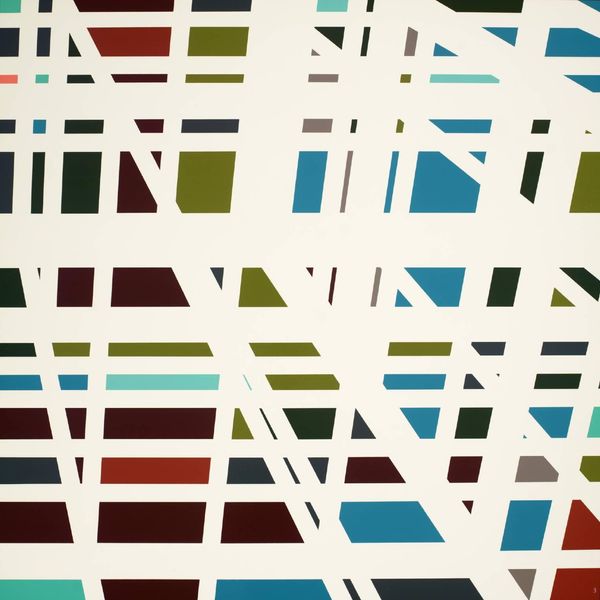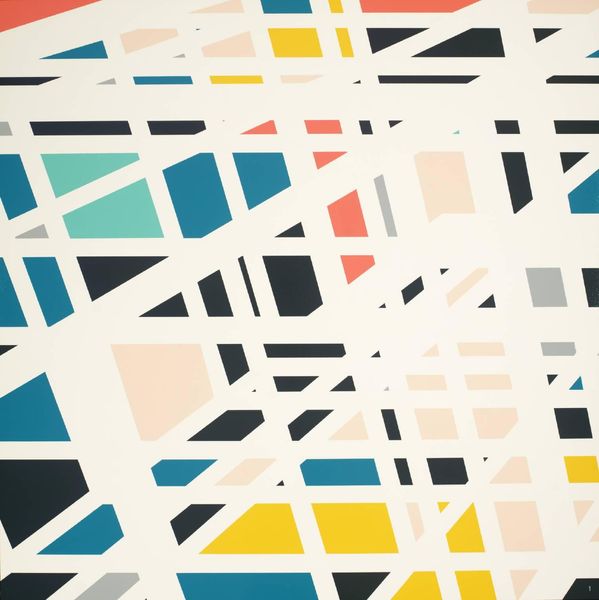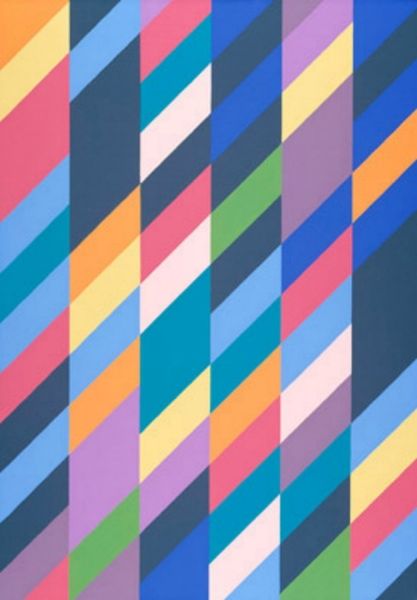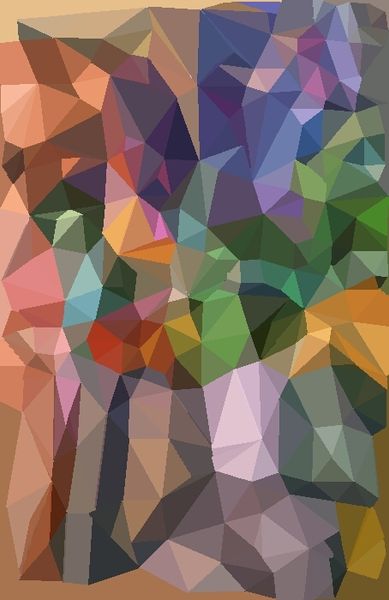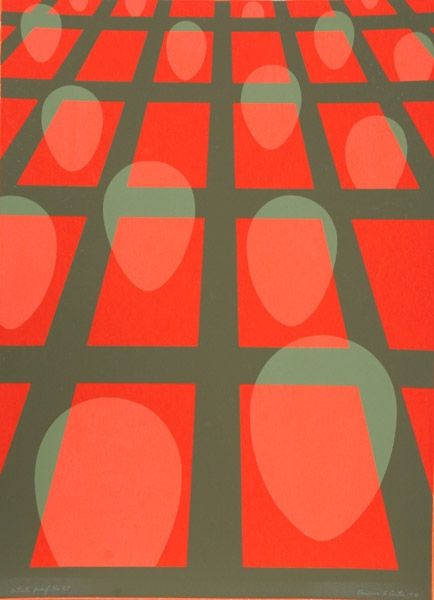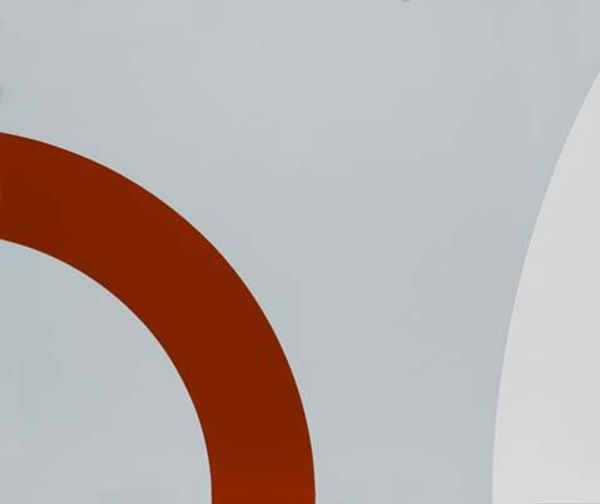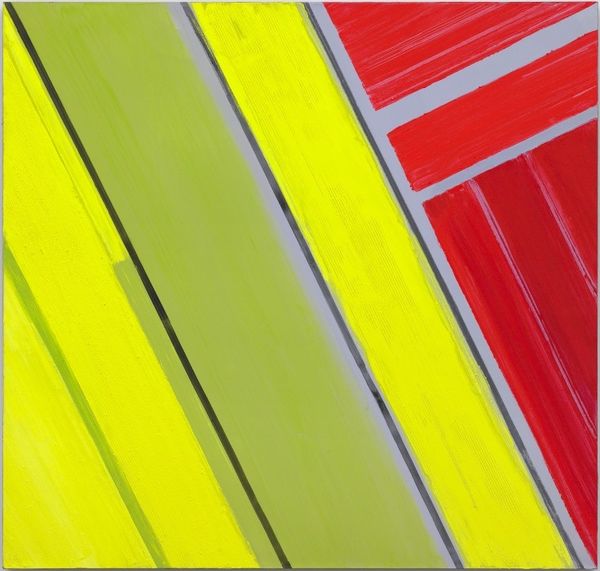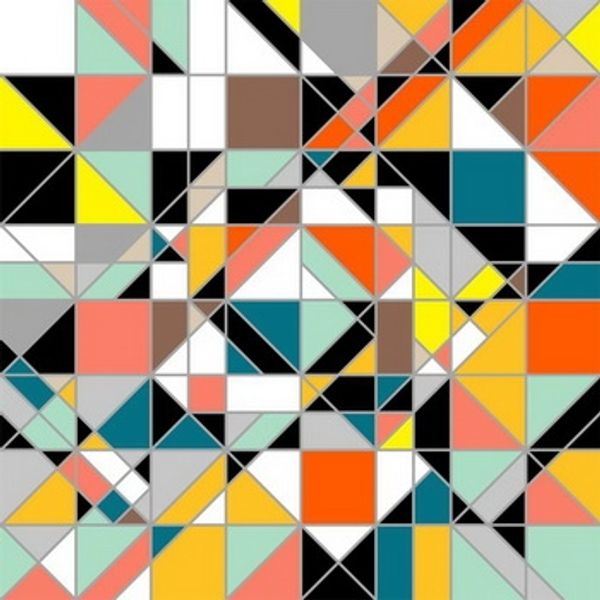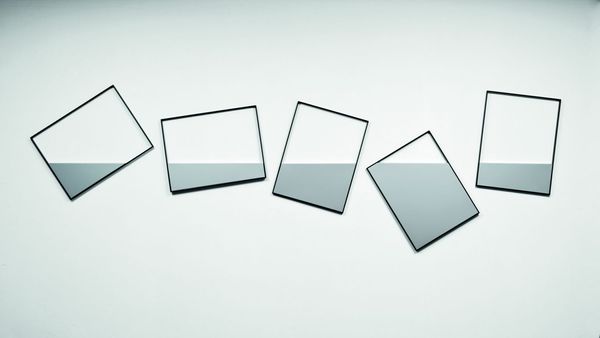![[no title] by Sarah Morris](/_next/image?url=https%3A%2F%2Fd2w8kbdekdi1gv.cloudfront.net%2FeyJidWNrZXQiOiAiYXJ0ZXJhLWltYWdlcy1idWNrZXQiLCAia2V5IjogImFydHdvcmtzL2FjOTI3MTI1LWM1NzktNGY4NS04MDU1LWNmZDg2MDdmZmQ2OC9hYzkyNzEyNS1jNTc5LTRmODUtODA1NS1jZmQ4NjA3ZmZkNjhfZnVsbC5qcGciLCAiZWRpdHMiOiB7InJlc2l6ZSI6IHsid2lkdGgiOiAxOTIwLCAiaGVpZ2h0IjogMTkyMCwgImZpdCI6ICJpbnNpZGUifX19&w=3840&q=75)
Dimensions: image: 737 x 737 mm
Copyright: © Sarah Morris | CC-BY-NC-ND 4.0 DEED, Photo: Tate
Editor: This untitled piece by Sarah Morris features a grid of vibrant, skewed geometric shapes. It feels very architectural, almost like looking at a distorted city map. What do you see in this work? Curator: I see a critical engagement with power structures embedded within urban planning and corporate architecture. Morris often abstracts these forms, prompting us to question how these environments shape our experiences and reinforce existing inequalities. Editor: Inequalities? That's interesting. I hadn't considered that. Curator: Think about who designs these spaces, and who benefits from them. The cool detachment of the geometric style can also be interpreted as a commentary on the alienation inherent in contemporary urban life. Editor: I can see that. It makes me wonder about the social implications of abstract art. Curator: Precisely! Art like this challenges us to decode the visual language of power and consider its impact on our daily lives. Editor: That gives me a new perspective to appreciate abstract work. Thanks!
Comments
Join the conversation
Join millions of artists and users on Artera today and experience the ultimate creative platform.
tate 6 months ago
⋮
Dulles (Capital) is Morris’s first major print work. The portfolio comprises nine square prints containing abstract geometric grids. Blocks of bright greens, turquoise, yellow, browns, orange and greys are separated by white lines which appear recede into the distance at an extreme perspective. All nine prints may be displayed together, each print separated by 3.5cm of white wall, which becomes part of the work. They form a large square, depicting another, larger grid that echoes the structures within the individual prints. Displayed in this way they provide an off-centre variation of Morris’s painting Constitution Gardens 2000, (private collection). Each print is numbered in the lower right corner to designate its position within the overall grid. The bottom row (Tate P78602-P78604) is made up of large blocks of colour which become more broken up in the middle row (Tate P78599-P78601). By the top row (Tate P78596-P78598) the dense three-dimensional structure has become an intricate array of fragmented blocks and splinters of colour. Alternatively, the prints may be displayed individually or in smaller groups based on their positions within the full scheme.
